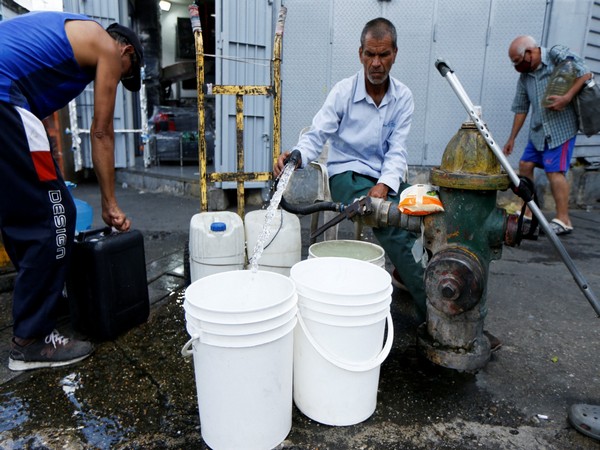More than quarter of world's population has no safe drinking water: UNESCO
More than a quarter, 26 per cent of the world's population, comprising approximately 2 billion people, do not have safe drinking water and 3.6 billion or 46 per cent lack access to safely managed sanitation, according to the report, published by UNESCO on behalf of UN-Water and released at the UN 2023 Water Conference in New York. Between two and three billion people experience water shortages for at least one month per year, posing severe risks to livelihoods, notably through food security and access to electricity.

- Country:
- United States
More than a quarter, 26 per cent of the world's population, comprising approximately 2 billion people, do not have safe drinking water and 3.6 billion or 46 per cent lack access to safely managed sanitation, according to the report, published by UNESCO on behalf of UN-Water released at the UN 2023 Water Conference in New York. Between two and three billion people experience water shortages for at least one month per year, posing severe risks to livelihoods, notably through food security and access to electricity.
The global urban population facing water scarcity is projected to double from 930 million in 2016 to 1.7-2.4 billion people in 2050. The growing incidence of extreme and prolonged droughts is also stressing ecosystems, with dire consequences for both plant and animal species, the United Nations Educational, Scientific and Cultural Organization (UNESCO) report said. "There is an urgent need to establish strong international mechanisms to prevent the global water crisis from spiralling out of control. Water is our common future and it is essential to act together to share it equitably and manage it sustainably," Audrey Azoulay, UNESCO Director-General said in a tweet.
"There is much to do and time is not on our side. This report shows our ambition and we must now come together and accelerate action. This is our moment to make a difference," Gilbert F. Houngbo, Chair of UN-Water and Director-General of the International Labour OrganizationInternational cooperation said in a tweet. Nearly every water-related intervention involves some kind of cooperation. Growing crops require shared irrigation systems among farmers. Providing safe and affordable water to cities and rural areas is only possible through communal management of water supply and sanitation systems. And cooperation between these urban and rural communities is essential to maintaining both food security and upholding farmer incomes, the report said.
Managing rivers and aquifers crossing international borders makes matters all the more complex. While cooperation over transboundary basins and aquifers has been shown to deliver many benefits beyond water security, including opening additional diplomatic channels, only six of the world's 468 internationally shared aquifers are subject to a formal cooperative agreement. On this World Water Day, the United Nations calls for boosting international cooperation over how water is used and managed. This is the only way to prevent a global water crisis in the coming decades, the report added.
Environmental services, such as pollution control and biodiversity, are among the shared benefits most often highlighted in the report, along with data/information-sharing and co-financing opportunities. For example, 'water funds' are financing schemes that bring together downstream users, like cities, businesses, and utilities, to collectively invest in upstream habitat protection and agricultural land management to improve overall water quality and/or quantity. Mexico's Monterrey Water Fund, launched in 2013, has maintained water quality, reduced flooding, improved infiltration and rehabilitated natural habitats through co-financing. The success of similar approaches in Sub-Saharan Africa, including the Tana-Nairobi river watershed, which supplies 95 per cent of Nairobi's freshwater and 50 per cent of Kenya's electricity, illustrates the global potential of such partnerships.
Inclusive stakeholder participation also promotes buy-in and ownership. Involving the end-users in planning and implementing water systems creates services that better match the needs and resources of poor communities, and increases public acceptance and ownership. It also fosters accountability and transparency. In displacement camps in the Gedo region of Somalia, residents elect water committees that operate and maintain the water points that supply tens of thousands of people. Committee members partner with local water authorities of the host communities to share and manage water resources.
The United Nations World Water Development Report is published by UNESCO on behalf of UN-Water and its production is coordinated by the UNESCO World Water Assessment Programme. The report gives insight into the main trends concerning the state, use and management of freshwater and sanitation, based on work by Members and Partners of UN-Water. (ANI)
(This story has not been edited by Devdiscourse staff and is auto-generated from a syndicated feed.)










